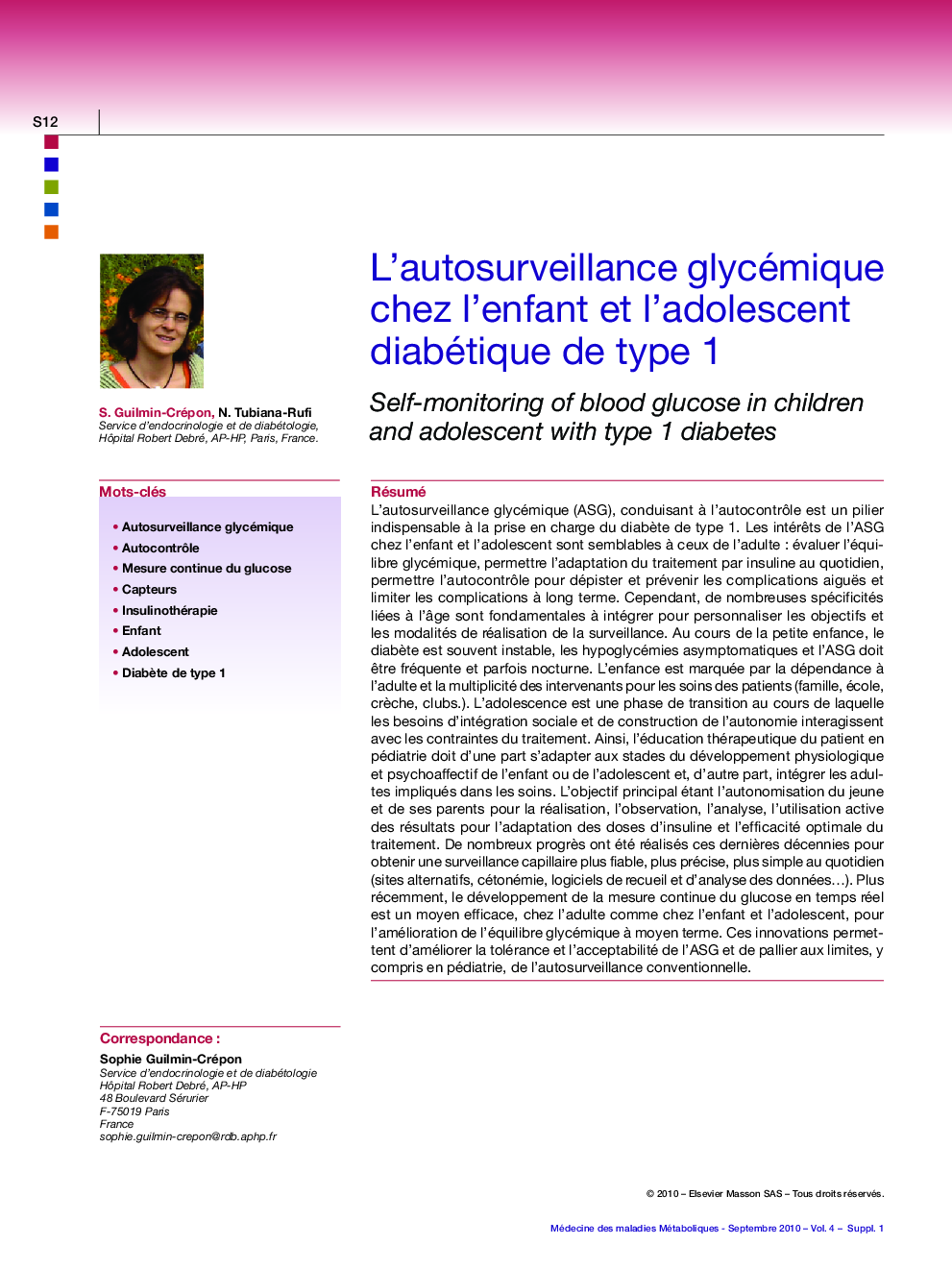| Article ID | Journal | Published Year | Pages | File Type |
|---|---|---|---|---|
| 3275227 | Médecine des Maladies Métaboliques | 2010 | 8 Pages |
Abstract
Prevalence of type 1 diabetes is increasing worldwide, especially in very young children. The goals of its treatment are to obtain adequate glycemic control to prevent or delay long term complications and to preserve quality of life of children and their family. Self-monitoring of blood glucose (SMBG) is an indispensable for the management of insulin therapy by active self-adjustment of the data. Interests of SMBG in pediatrics are similar to those in adults. However, physiological, medical, psychological, social particularities and specific needs of children or adolescent are fundamental to integrate into patient care involvement. Toddlers present frequently with unstable diabetes and asymptomatic hypoglycemia, childhood is marked by dependence on adults, and adolescence is a transitional phase during which the needs of social integration and autonomy interact with the treatment constraints. Many improvements such as the use of alternative sites, blood ketones measurements, software for data records and more recently the development of real time continuous glucose monitoring devices would offset the main limitations of conventional SMBG.
Related Topics
Health Sciences
Medicine and Dentistry
Endocrinology, Diabetes and Metabolism
Authors
S. Guilmin-Crépon, N. Tubiana-Rufi,
